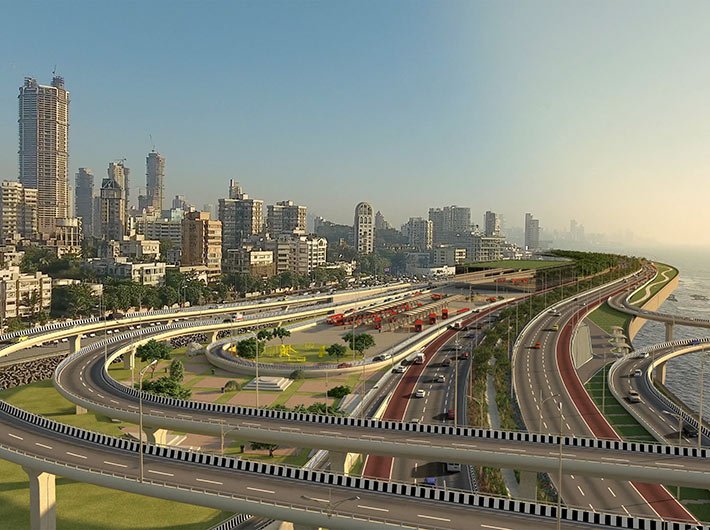To be ready by May 2023, the major infrastructure initiative will save travel time by an hour
Mumbai is building a coastal road to cut through traffic snarls and make life easier for commuters. The ambitious project, part of the city’s Development Plan (DP) 2035, is the second major initiative after the Bandra-Worli sea link, and should become a reality in 2023.
Here are the key facts about the project that will shore up the infrastructure of the megapolis:
The coastal road will run from Marine Drive in the south to Versova and thereafter to Mira Bhayandar and Ghodbunder Road. As per a policy decision in 2015-16, the BrihanMumbai Municipal Corporation (BMC) is at present constructing 9.98 km of the coastal road from Marine Drive to Worli, from where it will connect with the Bandra-Worli sea link. The portion from the sea link till Versova passing through Juhu Beach will be constructed on stilts 1-1.5 km inside the sea by Maharashtra State Road Development Corporation (MRDC). From Versova to Mira Bhayandar and Ghodbunder Road, the road will be in the form of a bridge and it will be constructed by Mumbai Metropolitan Region Development Authority (MMRDA).
Also read:
Mumbai's coastal road project: An end to traffic woes?
The coastal road includes a road on reclamation plus a bridge portion and tunnels. It includes two-way tunnel routes of 2 km under Malabar Hill starting from Chawpatty. The tunnel will be dug 12.20 metre underground and have a ready diameter of 11.
Besides the 9.8 km, the coastal road will have three interchanges of 14 km at Amarsons Garden at Breach Candy, Haji Ali and Worli. Each interchange has six-eight arms of connectors (roads that allow moving from the coastal road to internal roads and vice versa) without creating a jam. As a result, traffic flow will be smooth at the connecting roads. Additionally, as a major chunk of traffic will move straight, there will be no traffic jams at interchanges.
The coastal road is a necessity for the megapolis. As per BMC, due to much traffic congestion on all south Mumbai roads, it takes about an hour to reach from Marine Drive to Worli. The coastal road will reduce this travel time to 10 minutes at a speed of 60-80 km per hour. People will be able to save time and money on fuel.
According to the BMC, the coastal road is being built for the benefit of people, so there will be no toll charged. It will also be signal free. All vehicles allowed on the Bandra-Worli sea link will also pass on the eight-lane freeway subject to traffic rules and regulation. The road will also have two-way dedicated lane for buses and ambulances. BMC will set up BRTS bus stops.
A technical advisory committee appointed by the government of Maharashtra had come out with the concept of this ambitious project. Consultants STUP has prepared the detailed project report (DPR), and the tender is with Aecom, a US-based company. The contract stipulates specified penalties for unfinished works as per milestones and key dates to contractors Larsen &Toubro, Hindustan Construction Company and Hyundai Development Corporation which have been awarded various packages. The BMC expects to complete it by May 2023.
The Bombay High Court had last year ordered to stop the work on this project on ground of lack of environmental and wildlife clearance. But six months later, the Supreme Court in December allowed resumption of construction but with the rider that no ancillary development work like water parks and gardens on both sides of the coastal road would be carried out. The BMC, meanwhile, claims to have received all environmental clearances. Concerns of the fishing community have been taken care of as BMC will be providing 200-foot span to them, and issues concerning biodiversity and marine life are being taken care of with the help of NIO, Goa and as per the Central Institute of Fisheries Education.
The coastal road is expected to be used by 90,000 vehicles daily. The freeway will have a corresponding effect of increasing ridership on the Bandra -Worli sea link.

